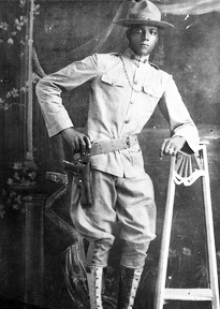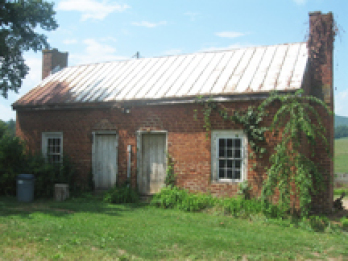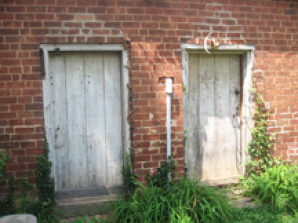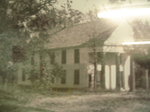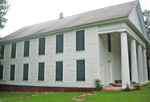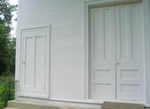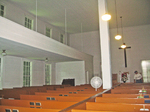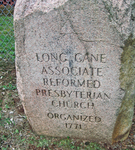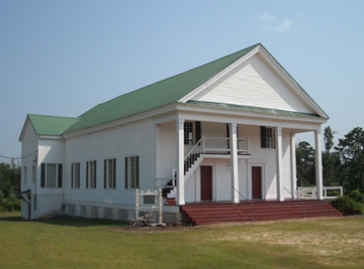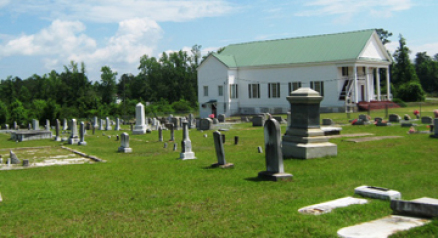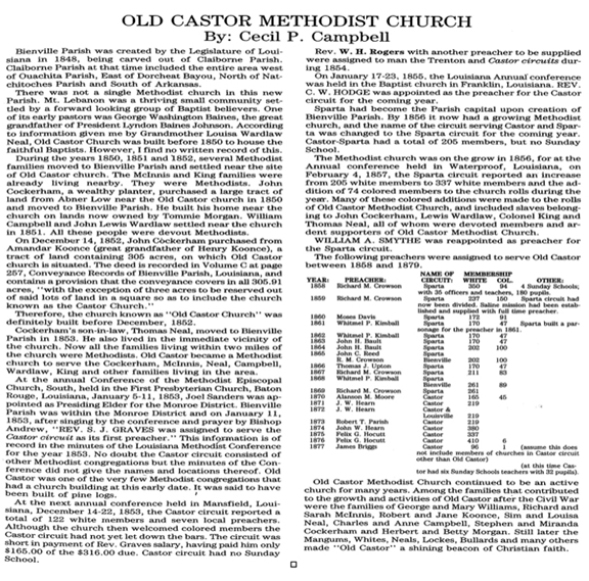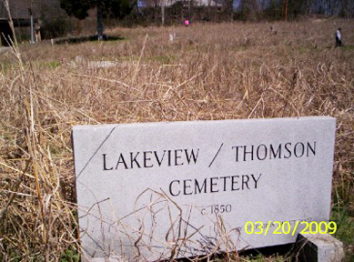Bondage to Freedom - Churches and Cemeteries
Blacks also established their own churches, apart from southern clergymen, most of whose Sunday sermons touted biblical support for the institution of slavery when, in fact, the bible makes reference to indentured servitude, which is an altogether different institution. In indentured servitude, a man works to pay off his debt, after which, he is set free. Slavery took the biblical practice of indentured servitude beyond the precipice of evil and cannot be compared to it.
Lower Long Cane Presbyterian Church.
Black slaves went to this
church, but went in by the smaller door on the left, which went up to the gallery above the main congregation.
Many of these early churches
were like this.
Top left - Old photo of Lower Long Cane Presbyterian Church
Bottom - Stone of the old Lower Long Cane Presbyterian Church
Belleville Baptist Church - Conecuh County, Alabama
This church is a two story frame building (circa 1840) with portico and external stairs leading to the slave gallery. All of the building material, lumber, brick, pews and pegs were hand made by members of the community. This Church was organized by Alexander Travis, uncle of the Alamo hero, William Barrett Travis. Alexander Travis also served as pastor at the Belleville Baptist Church for 32 years.
CEMETERIES
There are probably many black cemeteries in these states and we will discover them
eventually. For now here is one from the Abbeville, SC area.
LAKEVIEW CEMETERY, AKA THOMPSON CEMETERY
Abbeville, Abbeville County, South Carolina
Submitted by Brenda Newton
I recently visited Abbeville S.C. A cemetery in Abbeville has some really
interesting history.
About 4 years ago the Minister of St James AME Church in Abbeville and his wife
(Rev. and Mrs. James Thompson) were riding around the city of Abbeville and happened to notice a couple of tombstones on a tree and bush overgrown lot. They wondered why 2-3 people would be buried
people on what appeared to be a tree/brush overgrown lot. So they started asking questions about the lot.
What they found out was that it was an old cemetery, an all black cemetery, that
was no longer being used. There was no sign, and nothing to indicate that the tree/brush overgrown lot was a cemetery. The cemetery is located in Abbeville, at the intersection of Vienna and Hammond
streets.
Once the discovery that it was a cemetery was made, Rev. Thompson started a
project called “Operation Impact”. The goal of this project was and is to clean up this cemetery and restore some of the tombstones. The men working on this project are from the Abbeville, Calhoun
Falls, and Greenwood areas. These men have donated their time, efforts, and continue to do so.
Some local folk refer to the cemetery as “Lakeview”, while others call it
“Thompson”. After talking with Rev. Thompson, I visited the cemetery. Because of the work done by Operation Impact, I was able to find 3 of my family members graves. Some tombstones were so old that
time and weather had worn off the inscriptions, others were crumbled and in pieces. However, about 95% of the tombstones were in pretty good condition and I was able to read the inscriptions and
document them. Hopefully someone can find a family member, as I was able to do.
Rev. A.M. Wardeaw - b: 1865, d: March 7,
1916
Wardlaw?

